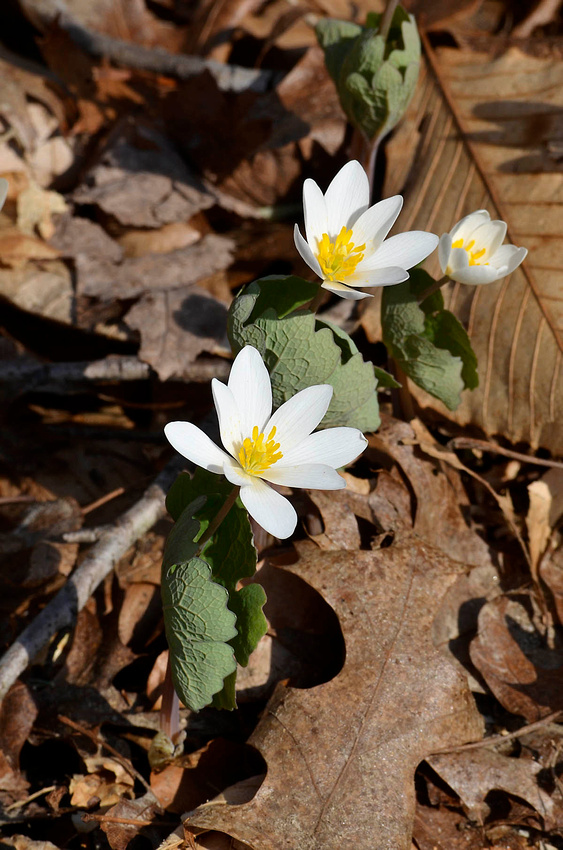The ant-Bloodroot connection
 Bloodroot trio
Bloodroot trio
With the sun on the kitchen thermometer, the temperature supposedly hit 80. I didn't believe it, but the breeze was downright warm, and it may well have gotten into the 70s. The Bloodroot, one of our earliest wildflowers, certainly was convinced and popped out of the ground en masse and opened its exquisite white flowers to the day. Small bees took advantage of the pollen offering, and I took advantage of the glorious floral display, some of it in various gardens, while other Bloodroot plants were blooming, well, wherever they pleased. Sanguinaria canadensis—the Latin makes reference to the red fluid exuded when the roots are cut—is a plant that practices myrmecochory, a fancy word for "seed dispersal by ants." To get the ants to do its bidding, the Bloodroot and other species using the same strategy produce seeds adorned with a little treat known as an elaisome. It looks like a tiny root and it's packed with goodies irresistible to ants, which then carry elaisome-bearing seeds back to their nests to feed the treats to their larvae. No doubt, sometimes the workers also indulge. Once the elaisome is eaten, the seeds are discarded, and there, often far from their parent, they germinate and eventually grow into blooming plants. Ants aren't confined by garden borders; neither are Bloodroots.